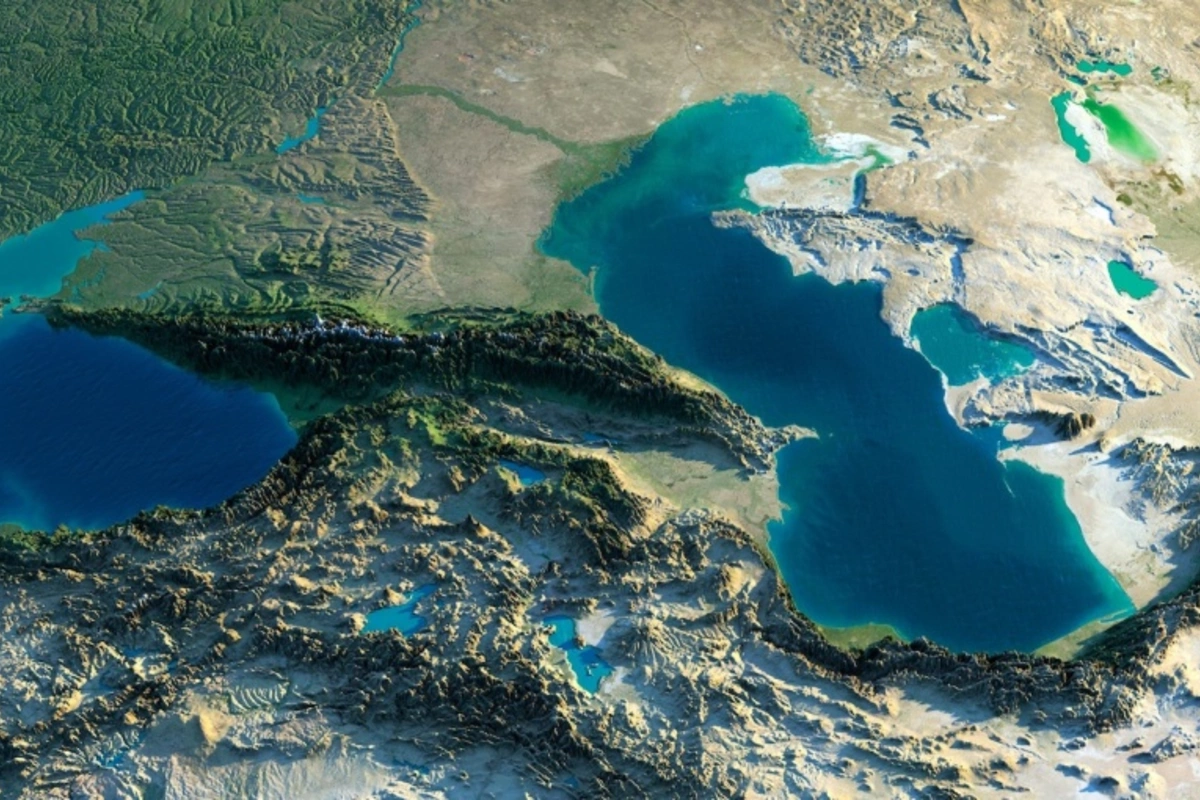
Azerbaijan will construct its first offshore wind farms, signaling the country’s commitment to unlocking the Caspian Sea's energy potential. This step represents a significant breakthrough in Azerbaijan's efforts to meet its renewable energy targets and reduce carbon emissions.
The COP29 climate conference held in Baku has been marked not only by discussions on the global climate agenda but also by numerous meetings and groundbreaking agreements.
Last week, during the conference, a memorandum of understanding was signed between the State Oil Company of the Azerbaijan Republic (SOCAR), the UAE-based Masdar company, and ACWA Power from Saudi Arabia. This agreement paves the way for the production of 3.5 GW of wind energy in the Azerbaijani sector of the Caspian Sea. The document was signed by SOCAR President Rovshan Najaf, Masdar CEO Mohamed Jameel Al Ramahi, and ACWA Power CEO Marco Arcelli.
As part of this initiative, Azerbaijan will construct its first offshore wind farms, signaling the country’s commitment to unlocking the Caspian Sea's energy potential. This step represents a significant breakthrough in Azerbaijan's efforts to meet its renewable energy targets and reduce carbon emissions.
At the 2024 Baku Energy Forum, Abid Malik, Vice President and Regional Director of ACWA Power, emphasized the immense potential of renewable energy in Azerbaijan. He highlighted the country’s political stability, favorable location with access to transit routes and corridors, and its importance as a target market for ACWA Power.
Azerbaijan’s plans for harnessing offshore wind energy were first unveiled in 2022 at the Baku Energy Forum. According to the Offshore Wind Roadmap, developed with the support of the World Bank and the International Finance Corporation (IFC), Azerbaijan could establish offshore wind farms with a total capacity of 7.2 GW in the Caspian Sea by 2040. This would account for nearly 40% of the country’s total energy consumption. The roadmap outlines goals for 2030 and 2036, including a pilot project with a capacity of 200 MW, followed by larger-scale initiatives, modernization of infrastructure, and adoption of global best practices.
Preliminary estimates suggest that the Azerbaijani sector of the Caspian Sea alone has the potential to produce 157,000 MW of wind energy—20 times the current capacity of Azerbaijan’s power plants. Tapping into this resource would not only address domestic energy needs but also bolster the country’s capacity to export green energy. Economists believe that with proper management, the investments required for offshore wind development would pay off relatively quickly.
The development of Azerbaijan’s Offshore Wind Roadmap involved the expertise of BVG Associates, a UK-based renewable energy consultancy. The UK’s experience in transitioning away from coal to renewable energy sources provides valuable insights for Azerbaijan’s green energy ambitions.
Previously, Azerbaijan signed agreements with Masdar and Fortescue Industries for a combined installed capacity of 22 GW, which is nearly three times the country’s current total capacity of 8 GW from all energy sources. Of the 22 GW, approximately 16 GW will be derived from offshore wind projects.
In 2022, the Global Wind Energy Council (GWEC) recognized Azerbaijan as one of four leading nations—alongside Australia, Sri Lanka, and Turkey—with significant offshore wind energy potential.
Globally, offshore wind energy is gaining traction as a critical component of the energy transition. Offshore wind farms are uniquely positioned to meet the energy needs of densely populated coastal regions. Experts predict that offshore wind will play a key role in achieving global green transition goals.
According to WindEurope and the GWEC, the global offshore wind capacity grew by 24% in 2023, reaching 75.2 GW, marking the second-largest annual increase in history. In Europe alone, offshore wind farms accounted for 35 GW of the continent's total installed capacity of 278 GW in the first half of 2024. To limit global warming to 1.5°C, economists estimate that global offshore wind capacity must reach 494 GW by 2030 and 2,465 GW by 2050. Advances in technology will be instrumental in meeting these targets.
Europe and China are leading in offshore wind research and development, while Turkey has also intensified technical studies of its coastal zones, aiming to achieve 5 GW of offshore wind capacity by 2035.
Now, Azerbaijan is joining this global trend and making its own contribution to the fight against climate change. The Caspian Sea opens up new opportunities for the country to leverage in its efforts to save the planet.
Share on social media